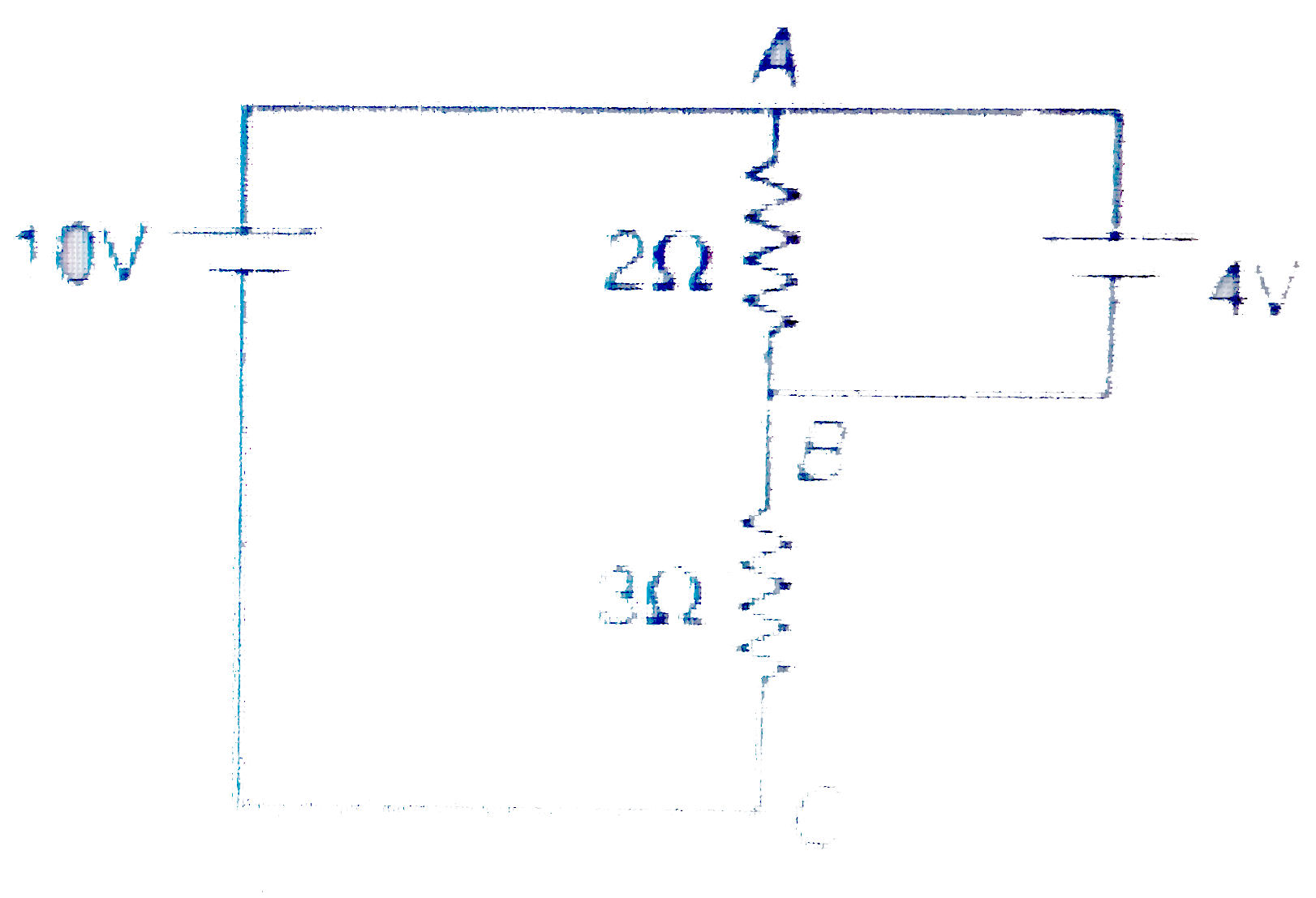A galvanometer coil has a resistance of 100Ω. When a current passes through the galvanometer, 1% of the current goes through the coil and the rest through the shunt. Find the resistance of the shunt.
To solve the problem of finding the resistance of the shunt in a galvanometer, we can follow these steps:
1. Understanding the Circuit:
- We have a galvanometer with a resistance Rg=100Ω.
- A total current I flows through the circuit, where 1% of this current flows through the galvanometer and 99% flows through the shunt.
2. Calculating Current through the Galvanometer:
- The current through the galvanometer is given by:
Ig=0.01I
- Here, Ig is the current through the galvanometer.
3. Calculating Current through the Shunt:
- The current through the shunt Is is:
Is=0.99I
4. Using Ohm's Law:
- The voltage across the galvanometer can be calculated using Ohm's law:
V=Ig⋅Rg=(0.01I)⋅100=1I
- The voltage across the shunt is:
V=Is⋅Rs=(0.99I)⋅Rs
5. Setting Voltages Equal:
- Since the galvanometer and the shunt are in parallel, the voltage across both must be equal:
1I=(0.99I)⋅Rs
6. Solving for Shunt Resistance Rs:
- We can cancel I from both sides (assuming I≠0):
1=0.99Rs
- Rearranging gives:
Rs=10.99=10099Ω
7. Final Result:
- The resistance of the shunt is:
Rs≈1.0101Ω
Summary:
The resistance of the shunt is approximately 10099Ω.
- We have a galvanometer with a resistance Rg=100Ω.
- A total current I flows through the circuit, where 1% of this current flows through the galvanometer and 99% flows through the shunt.
- The current through the galvanometer is given by:
Ig=0.01I
- Here, Ig is the current through the galvanometer.
- The current through the shunt Is is:
Is=0.99I
- The voltage across the galvanometer can be calculated using Ohm's law:
V=Ig⋅Rg=(0.01I)⋅100=1I
- The voltage across the shunt is:
V=Is⋅Rs=(0.99I)⋅Rs
- Since the galvanometer and the shunt are in parallel, the voltage across both must be equal:
1I=(0.99I)⋅Rs
- We can cancel I from both sides (assuming I≠0):
1=0.99Rs
- Rearranging gives:
Rs=10.99=10099Ω
- The resistance of the shunt is:
Rs≈1.0101Ω
The resistance of the shunt is approximately 10099Ω.
Topper's Solved these Questions
- PERMANENT MAGNETSBOOK - HC VERMA ENGLISHCHAPTER - PERMANENT MAGNETSEXERCISE - Objective
13 Videos
- PERMANENT MAGNETSBOOK - HC VERMA ENGLISHCHAPTER - PERMANENT MAGNETSEXERCISE - Objective II
1 Videos
- PERMANENT MAGNETSBOOK - HC VERMA ENGLISHCHAPTER - PERMANENT MAGNETSEXERCISE - Short Answer
11 Videos
- OPTICAL INSTRUMENTSBOOK - HC VERMA ENGLISHCHAPTER - OPTICAL INSTRUMENTSEXERCISE - Question for short Answer
12 Videos
- PHOTO ELECTRIC EFFECT AND WAVE PARTICLE DUALITYBOOK - HC VERMA ENGLISHCHAPTER - PHOTO ELECTRIC EFFECT AND WAVE PARTICLE DUALITYEXERCISE - question for short answer
13 Videos
Similar Questions
A galvanometer has resistance 1Ω. Maximum deflection current through it is 0.1 A
View SolutionA galvanometer has a resistance of 98Ω. If 2% of the main current is to be passed through the meter what should be the value of the shunt?
View SolutionA galvanometer has a resistance of 3663Ω. A shunt S is connected across it such that (1/34) of the total current passes through the galvanometer. Then the value of the shunt is
View SolutionA galvanometer has a resistance of 3663Ω. A shunt S is connected across it such that (1/34) of the total current passes through the galvanometer. Then the value of the shunt is
View SolutionA galvanometer has a resistance of 100Ω. A current of 10−3A pass through the galvanometer. How can it be converted into (a) ammeter of range 10 A and (b) voltmeter of range 10v.
View SolutionA moving coil galvanometer has a resistance of 990Ω. in order to send only 10% of the main currect through this galvanometer, the resistance of the required shunt is
View SolutionWhen a current is passed in moving coil galvanometer, the coil gets deflected because,
View SolutionA galvanometer has resistance 36Ω if a shunt of 4Ω is added with this, then fraction of current that passes through galvanometer is:
View SolutionIf 2% of the main current is to be passed through the galvanometer of resistance G, the resistance of shunt required is
View SolutionCurrent passing through 3Ω resistance is

View Solution
